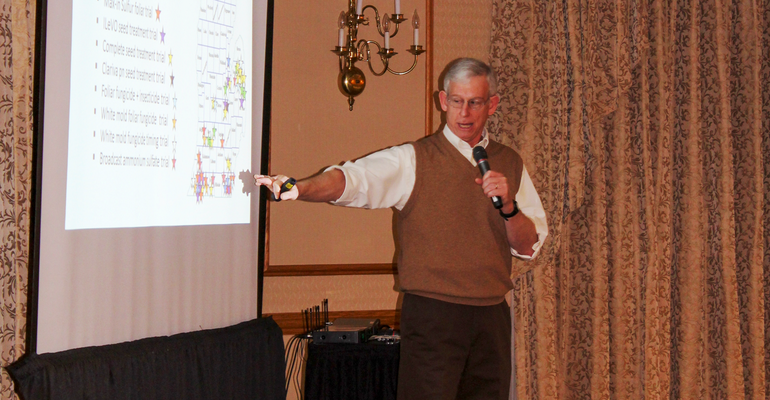February 22, 2019

By Deborah Jeanne Sergeant
Planting more soybean seeds per acre should lead to better profitability, but that's not what Mike Staton, Michigan State University Extension soybean educator, has learned from a three-year study completed last year.
Staton says trials were done in 11 different locations in Michigan in 2018. The state’s climate and growing season is similar to New York’s.
Farmers worked with Michigan State researchers and planted beans at the following rates: 80,000, 100,000, 130,000 and 160,000 seeds per acre. The farmers participated from 2015 through 2018.
"They wanted to know how low we could go," Staton says regarding planting rate. "Planting at 160,000 looks better, but is it really worth it?"
With tight margins and concerns about the high cost of seed, farmers want to maximize revenue without wasting money on excess seed.
The farmers in the study used their own equipment and management methods, an approach Staton preferred because it showed results in real-world situations. At each location, researchers took final stand counts at harvest time. The number of plants in 20-foot rows was determined at three locations in each strip.
Yields and profits
Results showed the average yield was 64 bushels in the 80,000-seed plots, 65.2 bushels in the 100,000-seed plots, 65.3 bushels in the 130,000-seed plots and 65 bushels in the 160,000-seed plots.
Yields decreased in the 160,000-seed plots compared to the lower plots, and the plots also saw 29% stand loss compared to 23% stand loss in the lower plots.
The cost of seed also affected profitability. In the 80,000-seed plots, income was $514 per acre; in the 100,000-seed plots, $516 per acre; in the 130,000-seed plot, $503 per acre; and in the 160,000-seed plot, $488 per acre.
Staton thinks plots with crowded plants don’t do as well.
 RESEARCH LEADER: Mike Staton has worked as an Extension educator for three decades. He leads on-farm research teams and other soybean educational efforts through Michigan State University and the Michigan soybean checkoff.
RESEARCH LEADER: Mike Staton has worked as an Extension educator for three decades. He leads on-farm research teams and other soybean educational efforts through Michigan State University and the Michigan soybean checkoff.

White mold was a big issue on some farms. The incidence of disease in one location was 13% in lower-planted plots but 46% in the higher-planted plots.
One meeting attendee asked if the lower-seeded areas experienced greater weed challenges. Staton says that the team didn't research that aspect of growing, but, anecdotally, he says weed growth was the same. "When all 40 sites were combined, the highest two planting rates produced similar yields and they yielded less than 1 bushel per acre more than the 100,000 rate and 2.1 bushels per acre more than the 80,000 planting rate," he says. "The highest planting rate was less profitable than the other three planting rates each year."
Field management matters
Five of the 10 no-till sites responded to higher planting rates while nine of the 30 tilled sites responded to higher planting rates. Two of the 11 sites planted in 30-inch rows responded to higher planting rates, and 10 of the 17 sites planted in 15-inch rows responded to higher planting rates.
"That's consistent with what we'd expect," he says. "If you have crusted soil, the 30-inch rows offer an advantage."
Thirteen of the 33 sites that used completely treated seeds responded to a higher planting rate. One of the seven sites that did not have a complete seed treatment responded to higher planting rates.
Three of the six sites planted with a drill or air seeder responded to higher planting rates while 10 of the 34 sites planted with a planter responded to higher planting rates.
"Most of this validates what we know except seed treatment," he says. Staton thought that seed treatment would lead to higher yields in the higher-seeded plots, but several variables, including variety, equipment, planting method and row spacing, likely affected yields.
Sergeant writes from central New York
You May Also Like




